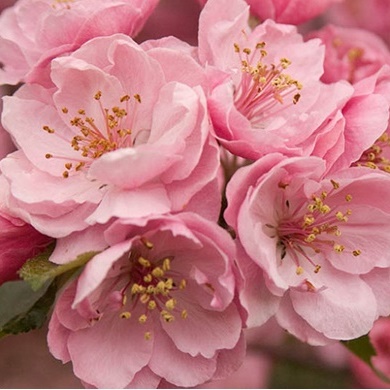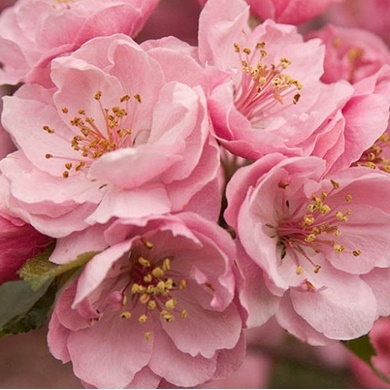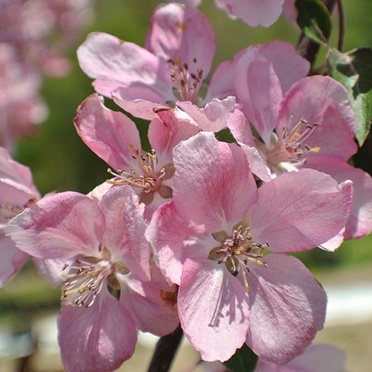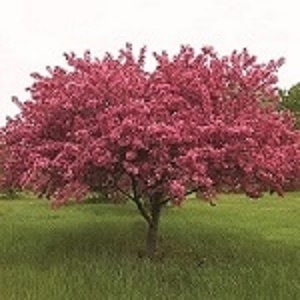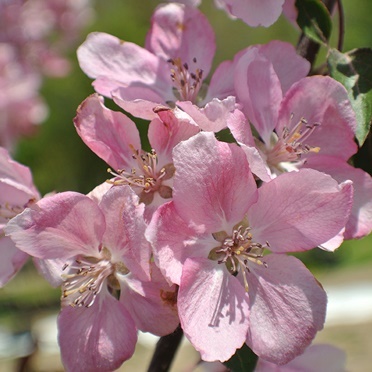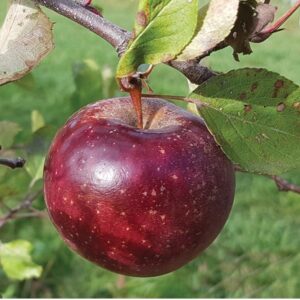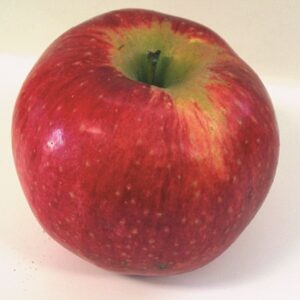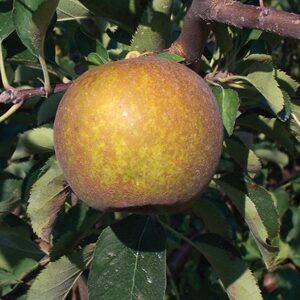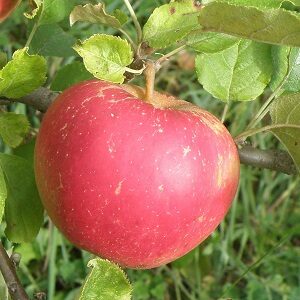Bareroot trees
Flowering Crabapple : BRANDYWINE® Standard (Antonovka)
$53.95
When the deep pink, double, rose-like blossoms transform this tree in the spring, it's alluring fragrance attracts bees and pollinator insects. Although Brandywine's blossoms are the main event, it does also produce 1/2" yellow apples with very high tannins. As John Bunker puts it-'Incredibly beautiful, fragrant flowers followed by unbelievably bitter fruit.' Obviously no fresh eating favourite, but cider makers love them. Vigorous tree with a spreading form has good disease resistance and great fall colour too.
NEEDS A POLLENIZER | ZONE 4 | HARVEST: SEPT
Rootstocks
G41 Dwarf
(2.5-3.1m/8-10ft)
G935 Small Semi-Dwarf
(3.25-4m/10-13ft)
G969 Small Semi-Dwarf
(3.25-4m/10-14ft)
G30 Semi-Dwarf
(3.6-5m/12-16ft)
G890 Semi-Dwarf
(3.6-5m/13-16ft)
Pollenator definitions
Some trees and many berry plants are SELF-FERTILE ̶means the insect pollinators or even the wind can pollinate the blossoms without the need of a second tree.
NEEDS A POLLENIZER ̶ means another tree of the same type or kind but a different variety must be blooming nearby at the same time.
EXAMPLE A Liberty apple and a Wealthy apple can cross-pollinate. Two trees of the same variety ie: ̶ 2 Wealthy apples, cannot cross pollinate because they are genetically identical.
Other trees are marked as SEMI-FERTILE. These will set fruit without a second tree. However they will often bear more, and sometimes larger fruit if another variety of the same kind of tree is nearby.
You can select 2 different trees of the same kind marked as NEEDS A POLLENIZER or plant one of those along with one SELF-FERTILE or one SEMI-FERTILE. Also consider ripening times ̶ a Goldrush apple might not start blooming before a Pristine is finished.
NEEDS A POLLENIZER ̶ means another tree of the same type or kind but a different variety must be blooming nearby at the same time.
EXAMPLE A Liberty apple and a Wealthy apple can cross-pollinate. Two trees of the same variety ie: ̶ 2 Wealthy apples, cannot cross pollinate because they are genetically identical.
Other trees are marked as SEMI-FERTILE. These will set fruit without a second tree. However they will often bear more, and sometimes larger fruit if another variety of the same kind of tree is nearby.
You can select 2 different trees of the same kind marked as NEEDS A POLLENIZER or plant one of those along with one SELF-FERTILE or one SEMI-FERTILE. Also consider ripening times ̶ a Goldrush apple might not start blooming before a Pristine is finished.
Other products in this zone
Frequently bought together...
Growing Tips
Apple Growing Tip
Besides selecting the most disease resistant varieties, there are
a few simple things to do to have better apples.
- Fertilize under the outer edges of your trees. There are no feeder roots next to the trunk. A well fed tree stays healthier. (Adequate calcium in the soil also helps so that apples keep longer.)
- Pick up fallen fruit and compost, dispose of, or feed to livestock (where possible).
- Rake up leaves in the fall and compost them away from the orchard.
- Prune trees to encourage light and air to reach the inside of the tree.
- Provide bird nesting sites near your orchard. A variety of orchard companion type plants will attract native pollinator insects and also encourage birds to come and eat insect pests.
